Abstract
A portion of the lateral body wall overlying the lung cavity of the arboreal frog, Eleutherodactylus coqui, vibrates in response to free-field sound. Peak displacement amplitude of the body wall in response to a natural call note presented at 73 decibels sound pressure level is 1.70 X 10(-9) m, roughly 8 decibels less than that of the ipsilateral eardrum, as measured by laser Doppler vibrometry. We show that the vibration magnitude varies predictably across the body profile and is posture and frequency dependent. Two routes to the inner ear are described for sounds impinging on the body wall; either of these accessory pathways could modify direct input from the peripheral auditory system and enhance sound localization in these small vertebrates.
Full text
PDF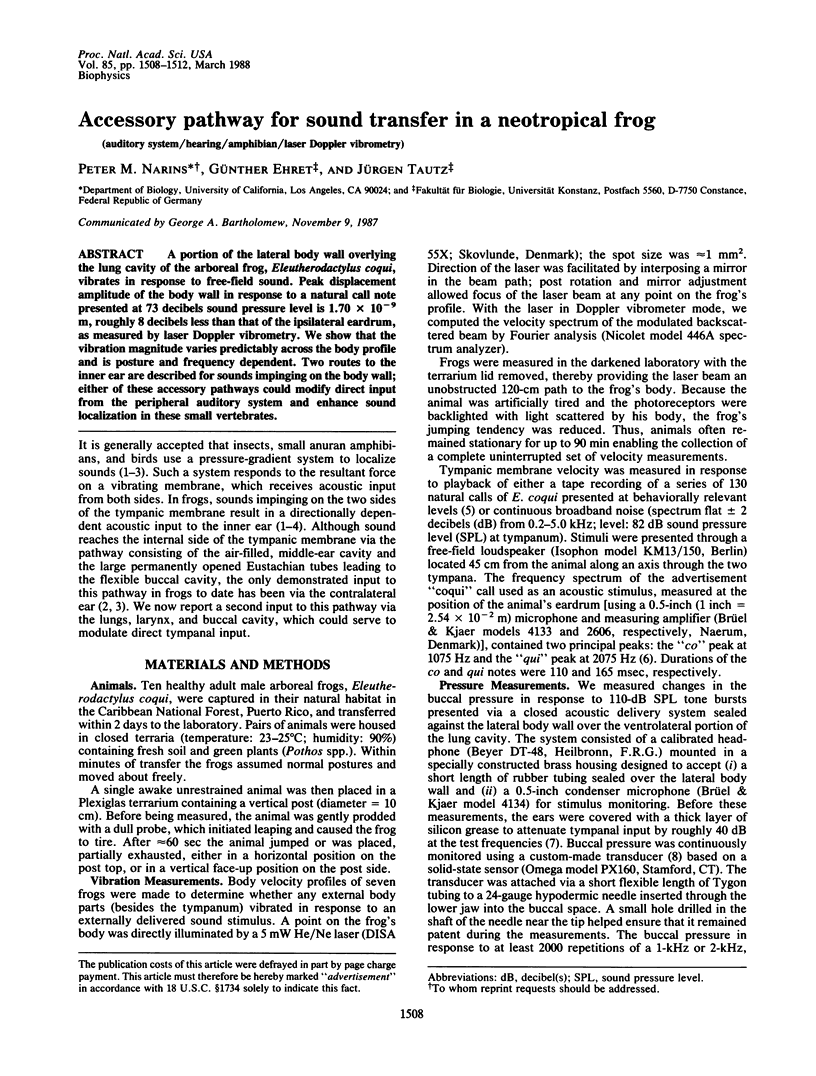
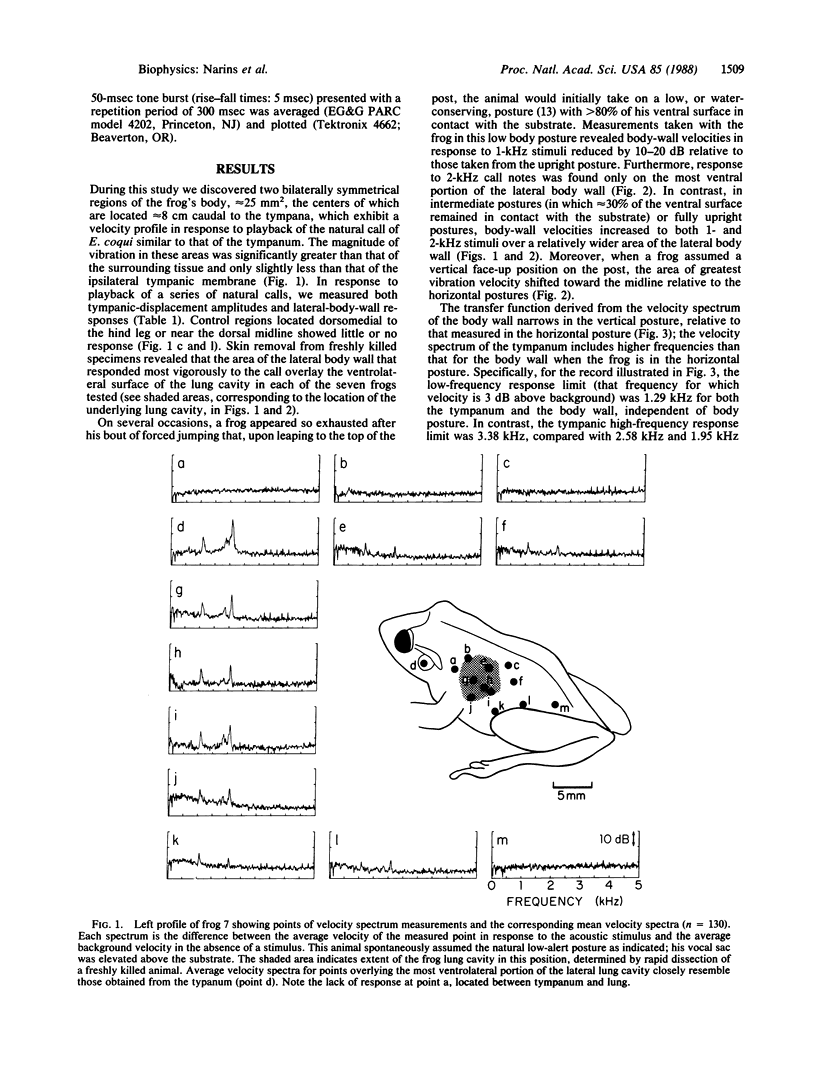
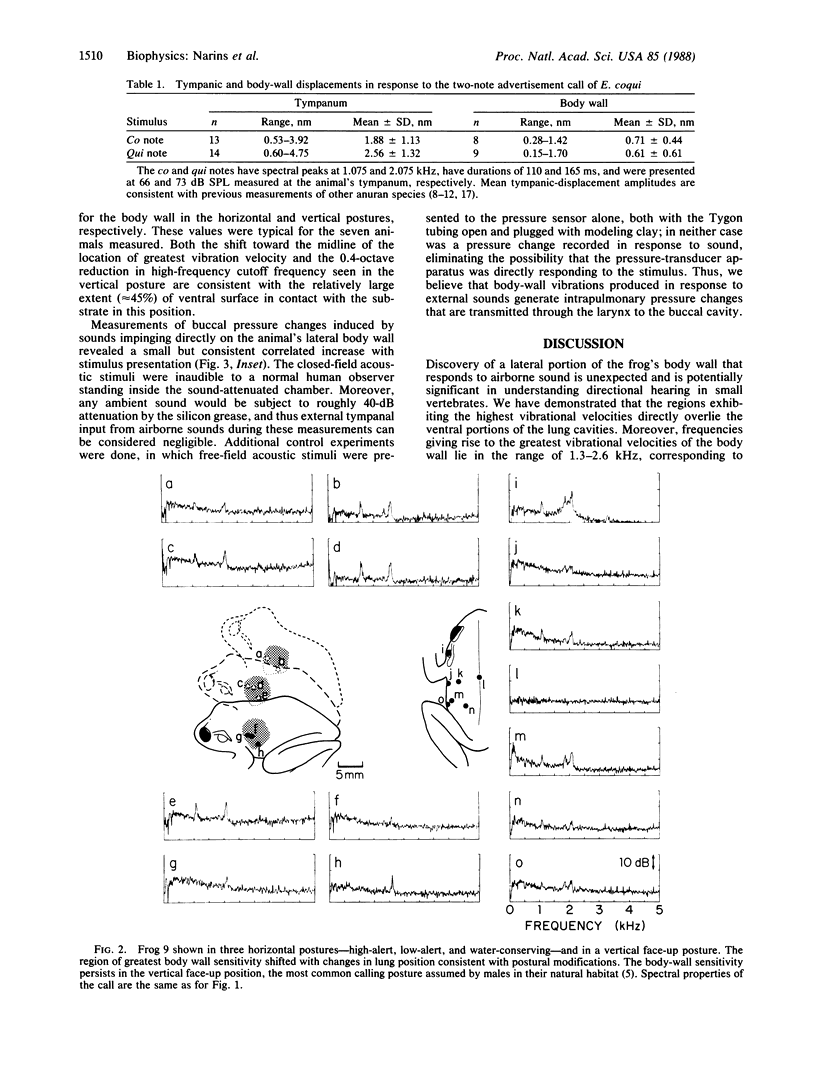
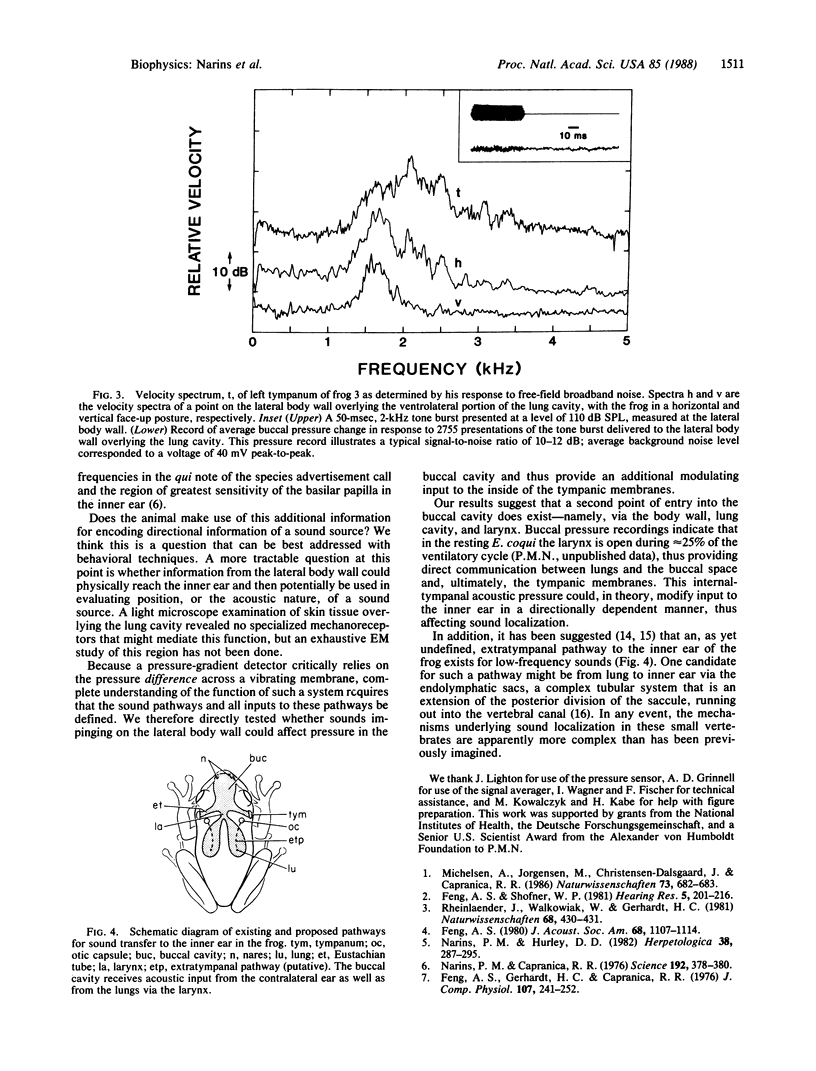
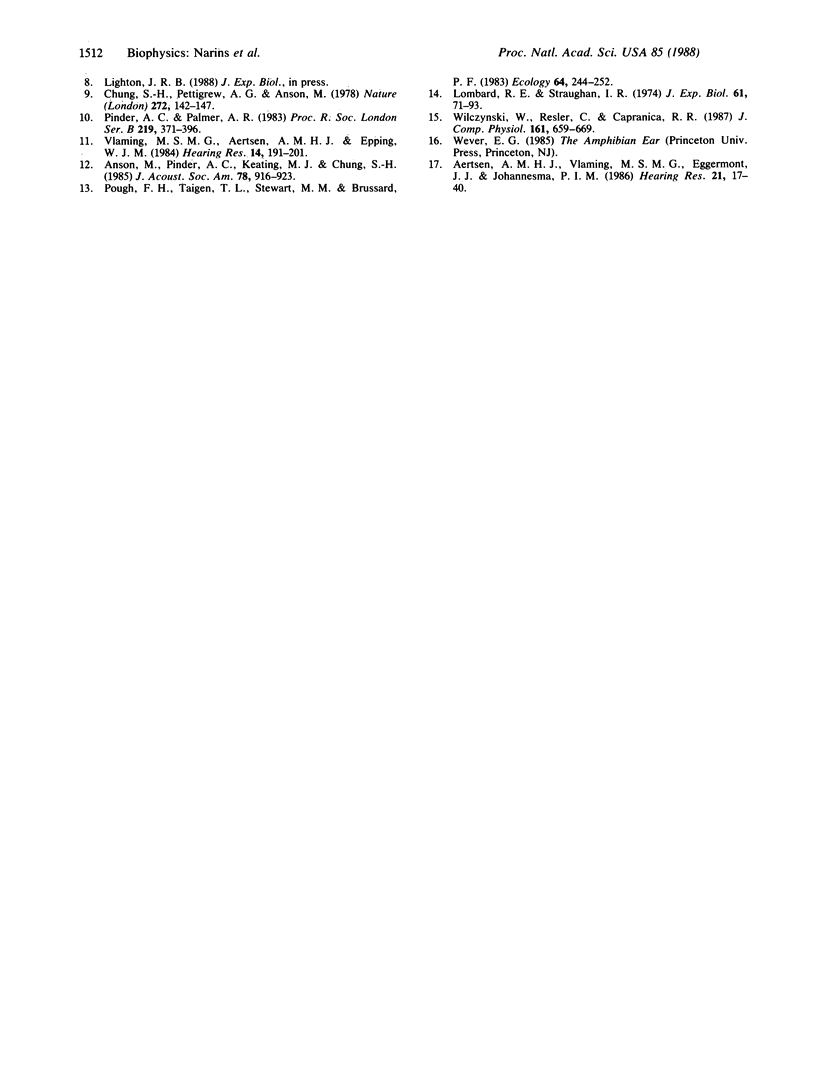
Selected References
These references are in PubMed. This may not be the complete list of references from this article.
- Aertsen A. M., Vlaming M. S., Eggermont J. J., Johannesma P. I. Directional hearing in the grassfrog (Rana temporaria L.). II. Acoustics and modelling of the auditory periphery. Hear Res. 1986;21(1):17–40. doi: 10.1016/0378-5955(86)90043-2. [DOI] [PubMed] [Google Scholar]
- Anson M., Pinder A. C., Keating M. J., Chung S. H. Acoustic vibration of the amphibian eardrum studied by white noise analysis and holographic interferometry. J Acoust Soc Am. 1985 Sep;78(3):916–923. doi: 10.1121/1.392922. [DOI] [PubMed] [Google Scholar]
- Chung S. H., Pettigrew A., Anson M. Dynamics of the amphibian middle ear. Nature. 1978 Mar 9;272(5649):142–147. doi: 10.1038/272142a0. [DOI] [PubMed] [Google Scholar]
- Feng A. S. Directional characteristics of the acoustic receiver of the leopard frog (Rana pipiens): a study of eighth nerve auditory responses. J Acoust Soc Am. 1980 Oct;68(4):1107–1114. doi: 10.1121/1.384981. [DOI] [PubMed] [Google Scholar]
- Feng A. S., Shofner W. P. Peripheral basis of sound localization in anurans. Acoustic properties of the frog's ear. Hear Res. 1981 Nov;5(2-3):201–216. doi: 10.1016/0378-5955(81)90046-0. [DOI] [PubMed] [Google Scholar]
- Lombard R. E., Straughan I. R. Functional aspects of anuran middle ear structures. J Exp Biol. 1974 Aug;61(1):71–93. doi: 10.1242/jeb.61.1.71. [DOI] [PubMed] [Google Scholar]
- Michelsen A., Jørgensen M., Christensen-Dalsgaard J., Capranica R. R. Directional hearing of awake, unrestrained treefrogs. Naturwissenschaften. 1986 Nov;73(11):682–683. doi: 10.1007/BF00366697. [DOI] [PubMed] [Google Scholar]
- Narins P. M., Capranica R. R. Sexual differences in the auditory system of the tree frog Eleutherodactylus coqui. Science. 1976 Apr 23;192(4237):378–380. doi: 10.1126/science.1257772. [DOI] [PubMed] [Google Scholar]
- Pinder A. C., Palmer A. R. Mechanical properties of the frog ear: vibration measurements under free- and closed-field acoustic conditions. Proc R Soc Lond B Biol Sci. 1983 Oct 22;219(1217):371–396. doi: 10.1098/rspb.1983.0079. [DOI] [PubMed] [Google Scholar]
- Vlaming M. S., Aertsen A. M., Epping W. J. Directional hearing in the grass frog (Rana temporaria L.): I. Mechanical vibrations of tympanic membrane. Hear Res. 1984 May;14(2):191–201. doi: 10.1016/0378-5955(84)90018-2. [DOI] [PubMed] [Google Scholar]
- Wilczynski W., Resler C., Capranica R. R. Tympanic and extratympanic sound transmission in the leopard frog. J Comp Physiol A. 1987 Oct;161(5):659–669. doi: 10.1007/BF00605007. [DOI] [PubMed] [Google Scholar]


